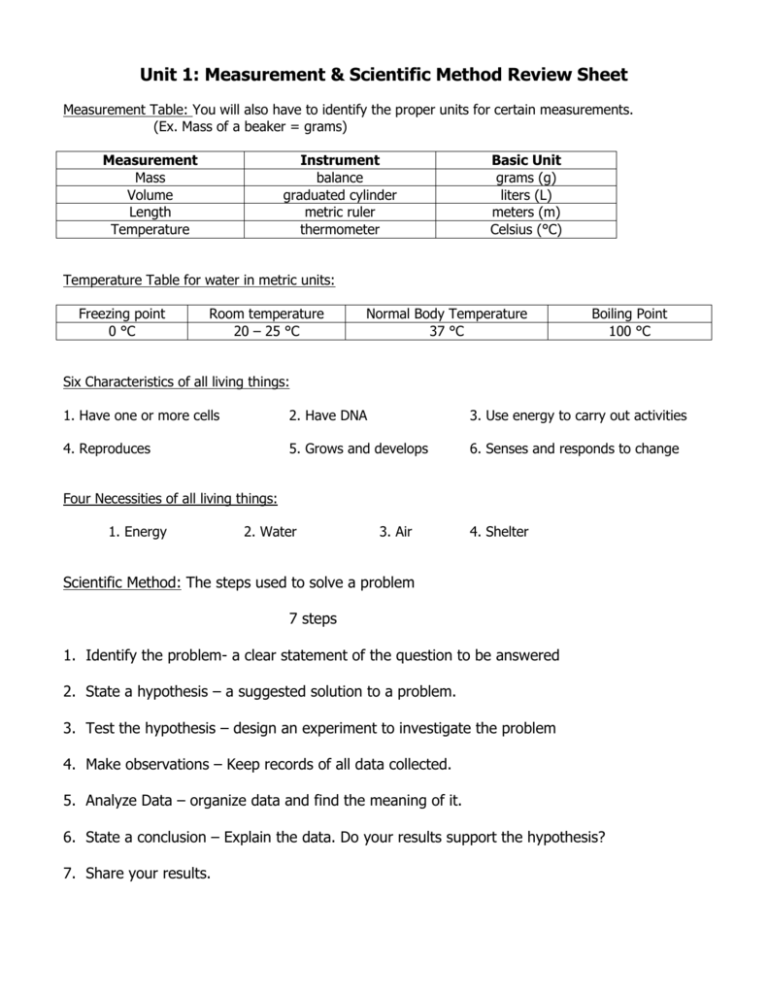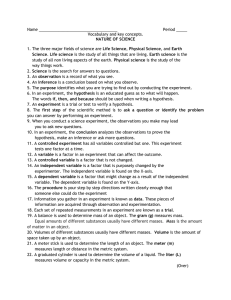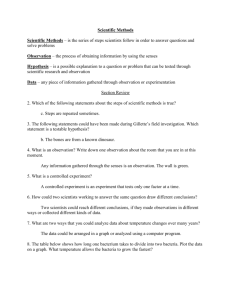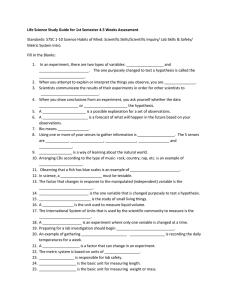Unit 1: Measurement & Scientific Method Review Sheet
advertisement

Unit 1: Measurement & Scientific Method Review Sheet Measurement Table: You will also have to identify the proper units for certain measurements. (Ex. Mass of a beaker = grams) Measurement Mass Volume Length Temperature Instrument balance graduated cylinder metric ruler thermometer Basic Unit grams (g) liters (L) meters (m) Celsius (°C) Temperature Table for water in metric units: Freezing point 0 °C Room temperature 20 – 25 °C Normal Body Temperature 37 °C Boiling Point 100 °C Six Characteristics of all living things: 1. Have one or more cells 2. Have DNA 3. Use energy to carry out activities 4. Reproduces 5. Grows and develops 6. Senses and responds to change Four Necessities of all living things: 1. Energy 2. Water 3. Air 4. Shelter Scientific Method: The steps used to solve a problem 7 steps 1. Identify the problem- a clear statement of the question to be answered 2. State a hypothesis – a suggested solution to a problem. 3. Test the hypothesis – design an experiment to investigate the problem 4. Make observations – Keep records of all data collected. 5. Analyze Data – organize data and find the meaning of it. 6. State a conclusion – Explain the data. Do your results support the hypothesis? 7. Share your results. Vocabulary: Hypothesis: an educated guess or a suggested outcome for the experiment Constant: Something that remains the same during an experiment Variable: Something that changes during the experiment Independent variable: The one thing you are changing to test the outcome. (amount of sunlight) Dependent variable: The measure of the change. (plant growth) Observation: Information gathered during an experiment using the senses. Inference: A conclusion based on observations or from given information. Data: The information gathered by observation Move up Move decimal left kilo1000 hecto100 deca10 BASE 1 g, L, m deci1/10 Move down Move decimal right centi1/100 milli1/1000 You will also have to convert measurements using the step method! Convert the following: A) 24.3 cm to mm B) 1245 g to kg C) 4.6 L to mL Which is larger? A) 550 mm or 1.5 m B) 3.2 L or 4000 mL C) 5000 g or 1.2 kg Which is smaller? A) 12 mm or 1 cm B) 600 mL or 2 L C) 3.5 g or 350 mg











